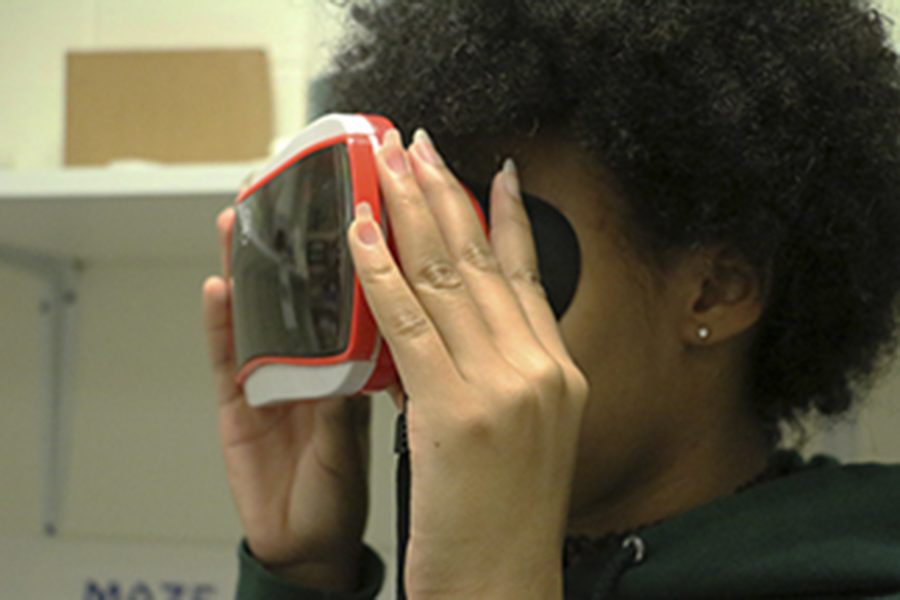Virtual reality in the classroom
Virtual reality headsets have educational use
The first time media center assistant Ms. Rachel Monk used a virtual reality headset, she saw a whale jump out of the water in front of her. “It was really cool. It felt like it was right there,” Monk said.
In the late ‘80s and early ‘90s, virtual reality was just an idea, Ms. Aubrey Thornsbury, application software specialist, said. “As technology is advancing we are really pushing the limits,” she said.
Virtual reality works in different ways, depending upon the headset, Thornsbury said. Essentially, an app is used to sense proximity, and sensors within the headset change the images as the user’s head moves.
Sophomore Thomas Schlebecker said he would “absolutely” want a headset, but perhaps not for academic reasons. “I would probably just play games with it,” he said. The headsets were likely made with this intent, Thornsbury said.
“You can immerse yourself in that game, which is kind of cool and scary at the same time,” Monk said. But Monk has another use for this technology. “I’m going to be giving a virtual tour of ancient Rome,” she said.
Monk plans to use virtual reality headsets in a Latin class by providing station activities. As half of the class reads, the other class will take a tour.
Sophomore Sammy Kacius, who takes Latin this semester, agrees with this idea. “Instead of looking at a picture of a city in your textbook, you could explore,” he said. “That’s actually pretty cool.”
Thornsbury said virtual reality technology offers multiple possibilities. “You could basically travel the world,” she said. Science and history classes could especially benefit. Astronomy students could see different planets or stars, anatomy students could experience surgeries through the surgeon’s eyes and geography students could explore the world. “It takes it beyond just looking at pictures,” she said.
Freshman Blake Neely plans to take the law education class his sophomore year. With virtual reality, he “could be in the moment of an actual court case or trial,” he said.
Freshman Emmett Williams also agrees that this technology helps “to engage you in real life scenarios (and) to get an experience for what you are learning would be used for.” He also said introducing virtual reality in class would engage him and other students more than traditional classroom activities.
Virtual reality may not be a prominent part in the next year or two of education, said Thornsbury. “We are totally not there right now,” she said. “But I think eventually it will have its use.”
Monk said eventually students could go on a class trip using a server. In fact, she in currently looking into that idea. However, it is difficult to overcome some technical difficulties, she said.
Virtual reality headsets hold promise for the future of education, and as the technology advances “it’s really just a learning experience for everybody,” Monk said. For those interested in exploring this technology, the library’s makerspace has a Google Cardboard headset available for use. Monk said, “Any student can come in and use them any time they want.”







